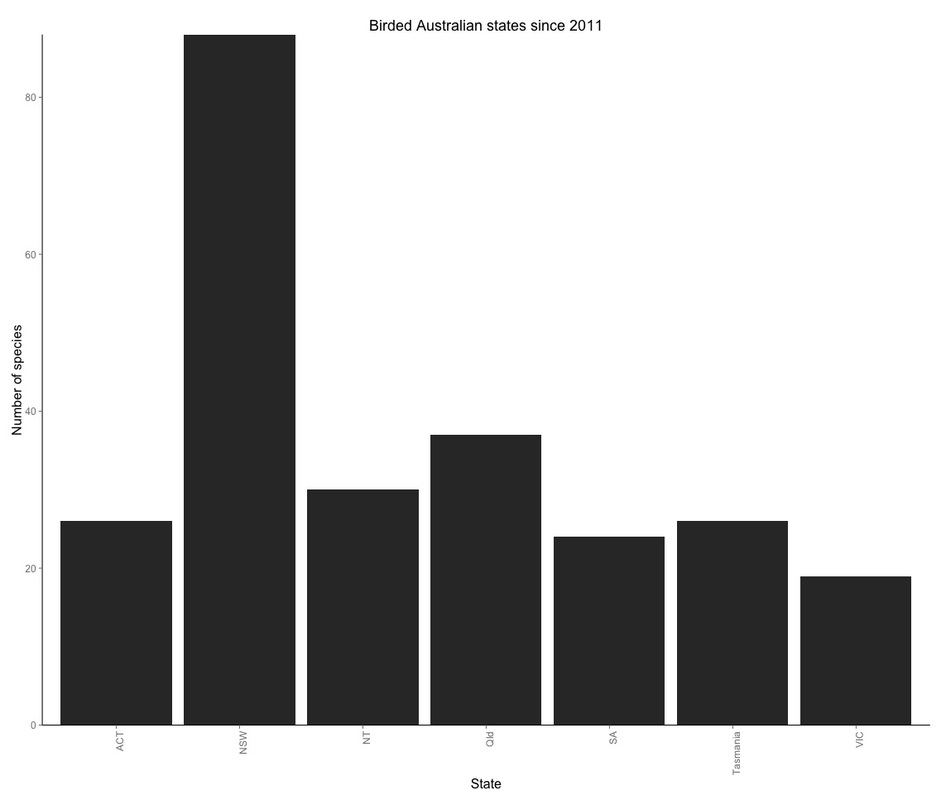|
I was recently in Europe for conferences and lab-visits. During my stay there, I reached a (humble) milestone of 500 bird species (now 544). I thought this was a good opportunity to look at my birding activity, and show how much I've really got to work on it. I started birding in 2011, but when I started my list I went through old photos and birds I saw throughout my childhood and youngadult life (reasonably common ones). These are all listed as <2006, as I can't remember the dates attached to these sightings. This exercise was also a fun way for me to learn how to use ggplot! I am totally sold on it. So good!  I have bird records from 15 countries. The countries I have seen the most birds in are: Australia=350 China=78 UK=22 Ecuador=21 NZ=20 The fact that the UK is in my top 5 countries is shows a pretty damning performance on my part. However, I didn't actually bird in Ecuador, I just took photos randomly and I went back and IDed them later on... Birding in China: Birding in Australia (photo by: Dylan Meyer) Those 544 birds I've seen spans 116 families (according to wikipedia taxonomy). In Australia my most seen families are: Meliphagidae = 43 Psittaculidae=21 Anatidae=19 Acanthizidae =14 Accipitridae=13 Meliphagids or honeyeaters, are unique to Wallacea (East of Wallace's Line), comprising 182 species and underwent an extensive radiation in Australia. Australia does not have hummingbirds, which meant another bird filled the avian nectar eating niche. However, not all Meliphagids eat nectar, they also eat fruits and insects. Below is my photo of a Grey-fronted Honeyeater Since 2011, I have birded most in NSW. Even when you look back prior to 2011, most of my observations come from NSW, but I could easily have falsely attributed most of the waterbirds to trips down to the NSW coast.
Comments are closed.
|
AuthorRamblings of a mad biologist Archives
September 2021
Categories |




 RSS Feed
RSS Feed
